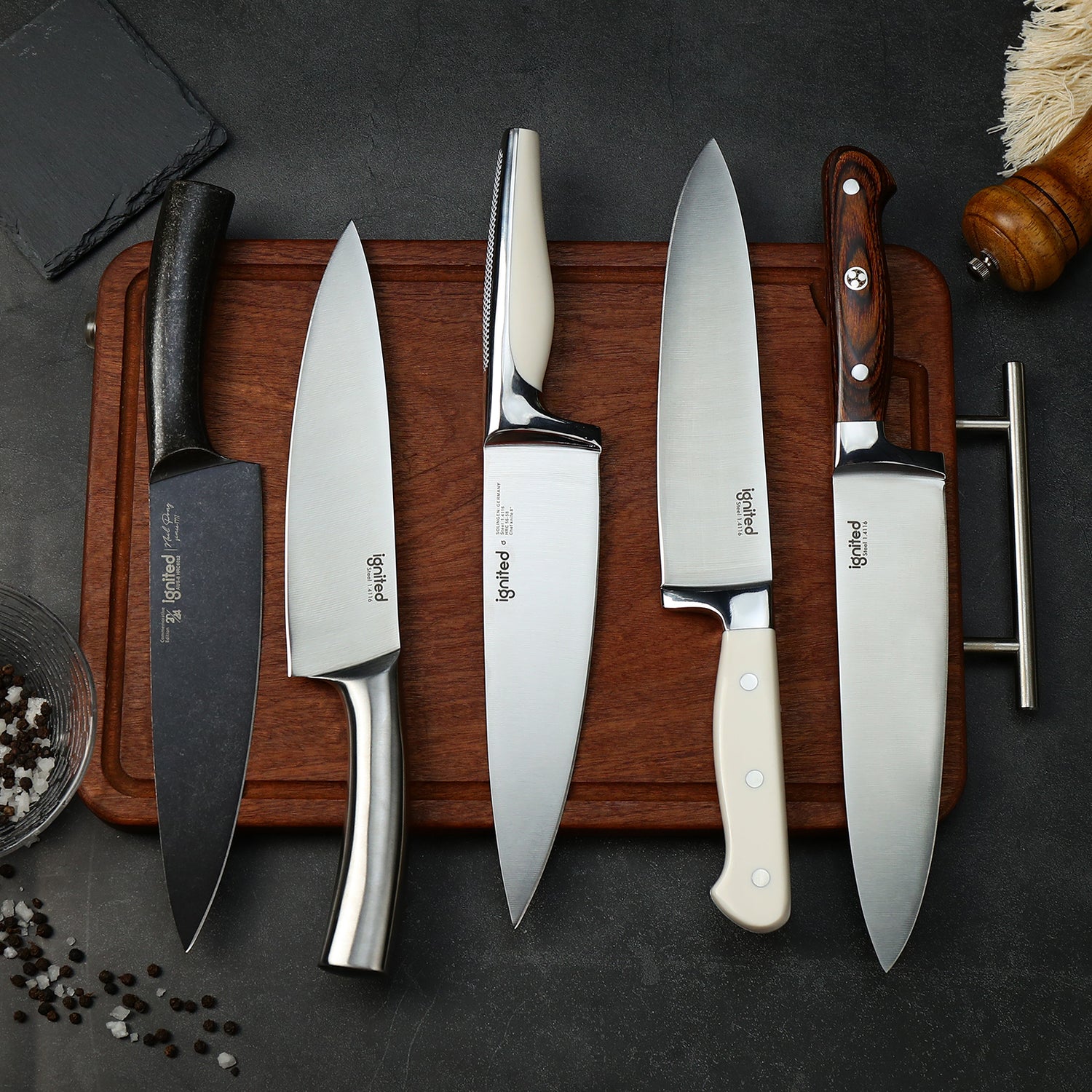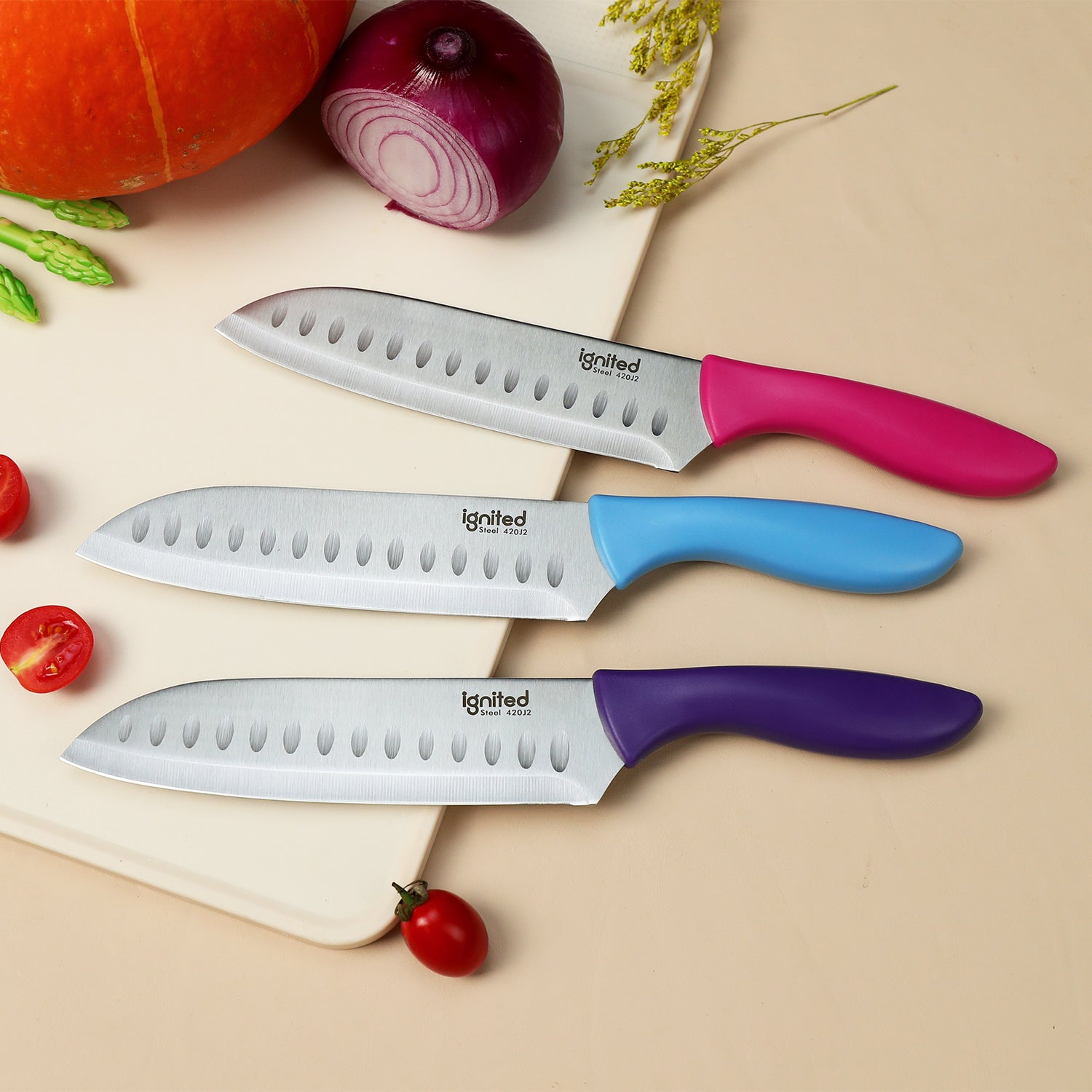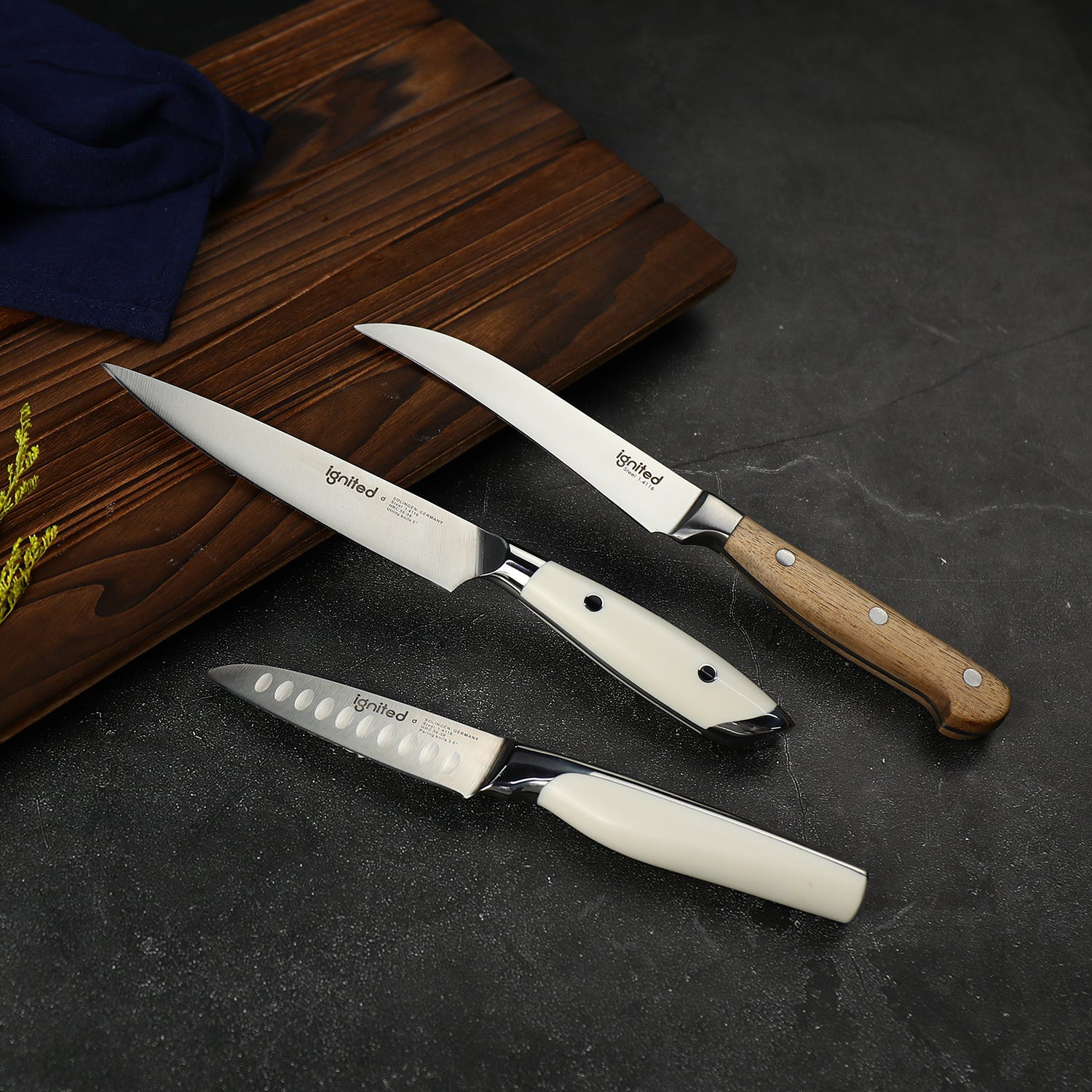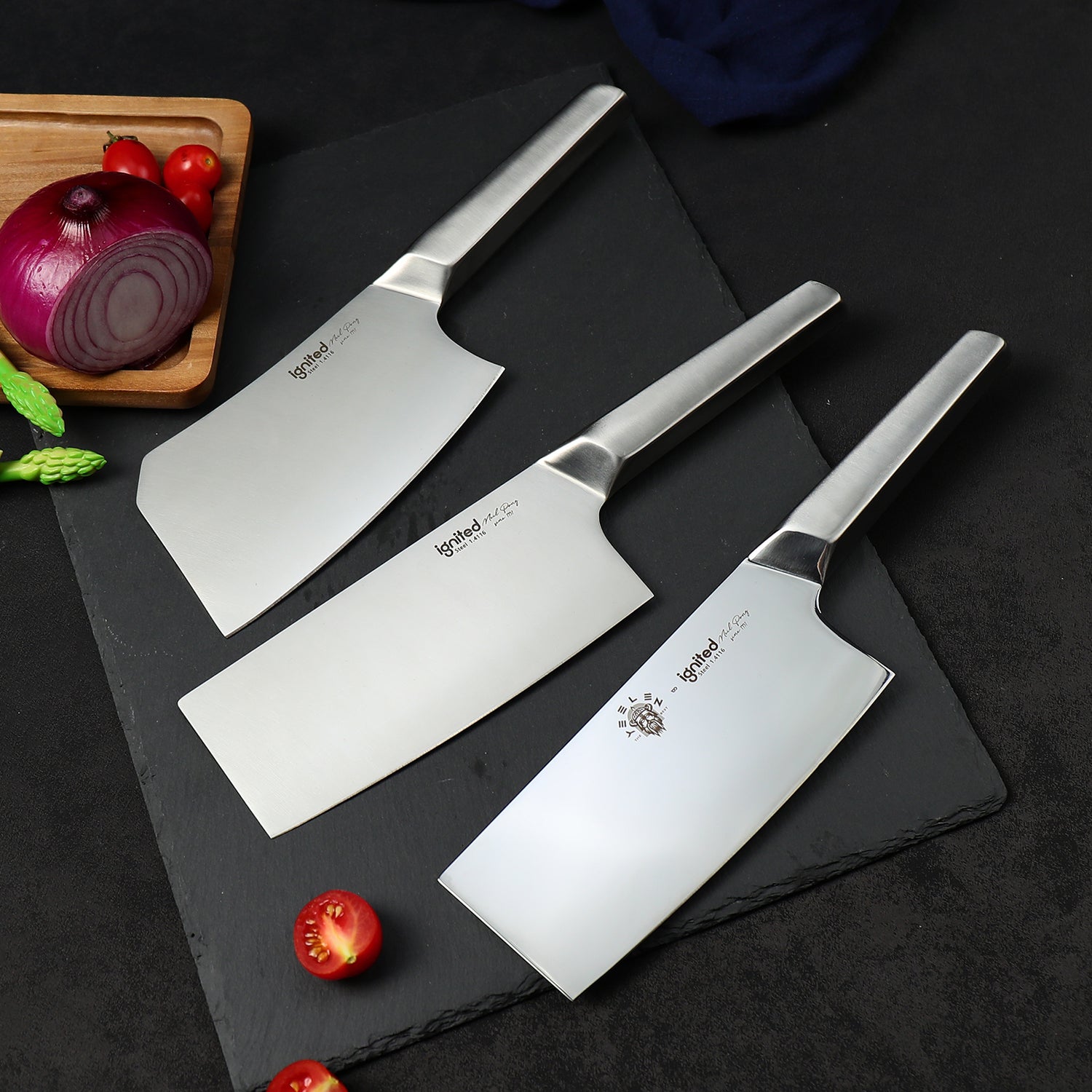Choosing a chef knife isn't just about blade sharpness—the handle material plays a critical role in comfort, performance, and safety. In this guide, we explore the most popular handle materials, their pros and cons, and how to choose the right one for your cooking style.
📑 Table of Contents
Why Handle Material Matters
The knife handle is your direct connection to the blade. A great handle ensures:
- Comfortable grip for long prep sessions
- Reduced hand fatigue
- Safety when working with wet or oily ingredients
- Control and balance for precise cutting
Common Handle Materials
Wood Handles
Classic and beautiful, but require regular oiling and hand washing. Best for traditionalists who value aesthetics.
Stabilized Wood
Wood infused with resin for better water resistance and durability. A good balance of beauty and performance.
Plastic (PP, POM)
Affordable, low-maintenance, and lightweight. Great for beginners or casual home cooks.
Composites (G-10, Micarta, Richlite)
Made from resin + fiber layers (like canvas, fiberglass). Durable, moisture-resistant, and modern in style. G-10 is especially grippy even when wet.
Metal (Stainless Steel, Titanium, Aluminum)
Very durable and sleek, but can be slippery or cold to the touch. Ideal for chefs who value industrial design and robustness.
Natural Materials (Bone, Antler, Leather)
Unique and luxurious, but high-maintenance. Best for collectors and enthusiasts.
Comparison Chart
| Material | Grip | Durability | Maintenance | Aesthetics | Water Resistance |
|---|---|---|---|---|---|
| Wood | High | Medium | High | Natural/Classic | Low |
| Stabilized Wood | High | High | Medium | Elegant/Modern | Medium |
| Plastic | Medium | Medium | Low | Simple | High |
| G-10 | High | High | Low | Modern | High |
| Micarta | Medium | High | Low | Textured | Medium |
| Metal | Low-Medium | Very High | Low | Sleek | High |
| Natural | Medium | Low-Medium | High | Unique | Low |
Handle Ergonomics and Grip
The material is just one piece of the puzzle. Handle shape, size, and weight distribution are just as critical. Look for:
- Rounded handles for comfort
- Textured surfaces for slip resistance
- Balanced weight between blade and handle
Handle Material vs. Environment
Live in a humid or coastal region? Avoid untreated wood or natural materials. Composites, metals, and stabilized wood offer better resistance to moisture and climate changes.
Care & Maintenance
- Wood: Oil regularly, hand wash only
- Stabilized Wood: Wipe clean, occasional oiling
- Plastic & G-10: Dishwasher-safe but hand washing preferred
- Metal: Clean with soft cloth, avoid abrasives
- Natural Materials: Keep dry, store in cool place
Sustainability Considerations
Eco-conscious shoppers may want to choose handles made from:
- Richlite (recycled paper + resin)
- Responsibly sourced wood
- Recycled plastic composites
How to Choose the Right Handle
Ask yourself:
- Do I use knives daily? (Comfort matters more)
- Do I mind hand-washing? (Wood is OK)
- Is grip during wet use important? (Choose G-10 or textured composite)
- Do I care about aesthetics? (Natural materials stand out)
Expert Tips
- Don’t soak your knives—ever.
- Wood handles need mineral oil every few weeks.
- Inspect rivets and fasteners regularly for safety.
Trends in Knife Handle Design
- Hybrid handles (wood + resin)
- Eco-friendly options
- Customizable or modular grips
FAQ: Knife Handle Materials
1. What is the most durable handle material?
G-10 and Micarta are top-tier in durability, grip, and weather resistance.
2. Are wooden handles safe?
Yes—if you hand-wash and oil them. Otherwise, bacteria can build up in cracks.
3. Can I use the dishwasher?
For plastic and G-10, yes. But hand washing is always safer for long-term use.
4. Are metal handles slippery?
They can be unless textured or paired with rubber inserts.
5. What's the best handle for professional chefs?
G-10, Micarta, or stabilized wood—these offer a great combo of comfort, durability, and hygiene.
🔚 Conclusion
The best knife handle material depends on your kitchen habits, design preference, and maintenance willingness. Whether you’re a casual cook or seasoned chef, investing in a handle that feels great in hand can completely transform your cooking experience.




